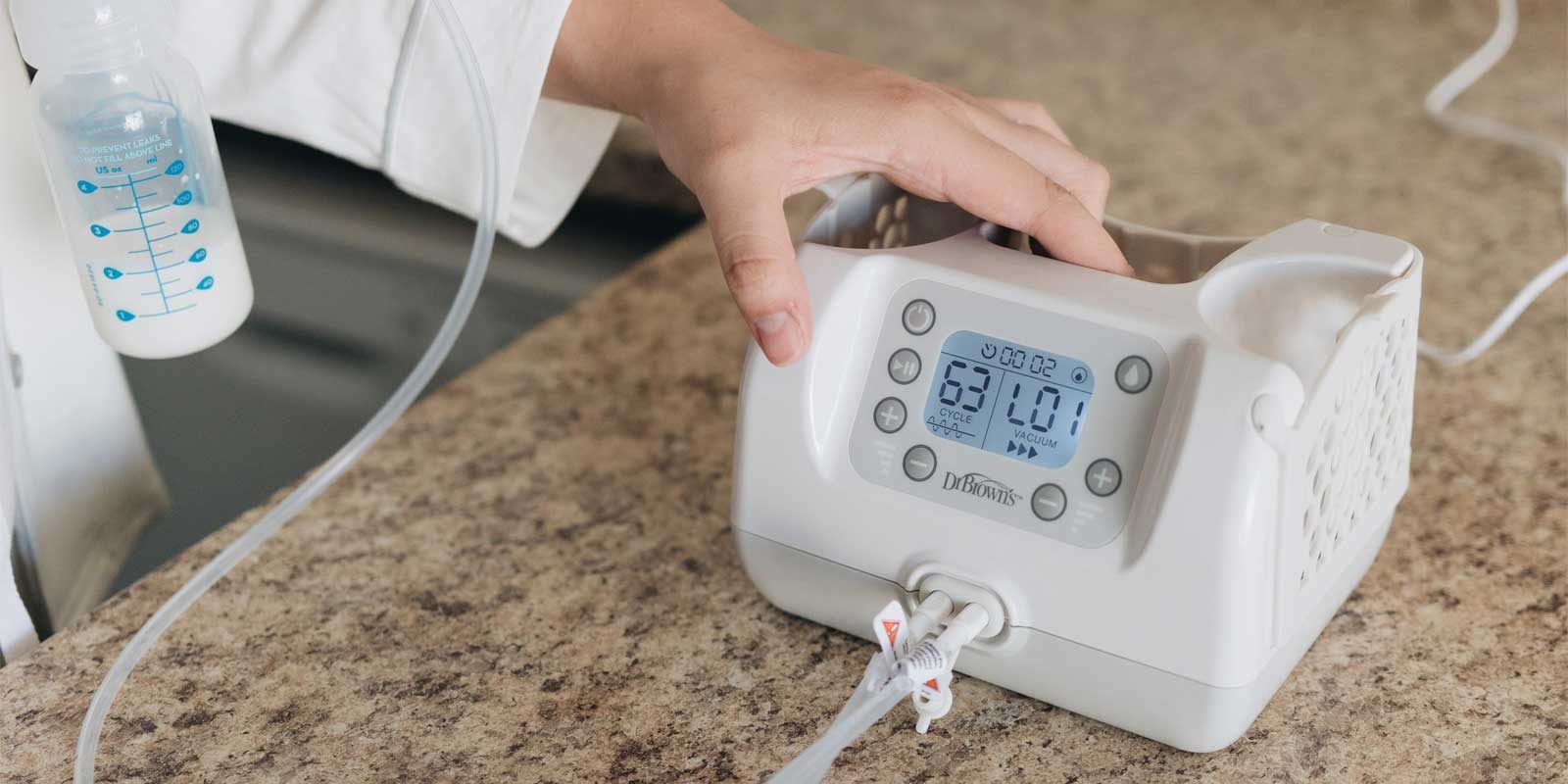Choosing the right breast pump is an important step in your breastfeeding journey. As you begin searching for the best option for you and your little one, the first thing to consider is whether a manual breast pump or electric breast pump is right for you. Here’s what you need to know when weighing your options.
Manual Breast Pumps
Manual breast pumps work without electricity. They are hand operated and usually come with only one pump, so it can only be used on one breast at a time.
Things to consider
- Manual pumps are typically more compact, with just one pump and no motor to carry around
- Because they do not require electricity, manual pumps can quite literally be used anywhere
- Manual pumps are typically more inexpensive than electric
- Compact manual pumps are highly portable and can fit in most purses or diaper bags
- Manual breast pumps are easy to clean and often dishwasher safe
- A manual breast pump is naturally quieter than conventional electric breast pumps
- If you are struggling to stimulate your let-down reflex, a manual pump may help you get started
- Manual pumps can help relieve engorgement during the early stages of breastfeeding
Electric Breast Pumps
Electric breast pumps use an electric-powered motor to express breast milk automatically. These are often larger, including two pumps and a motor, allowing milk expression on both sides at once.
Things to consider
- Because electric breast pumps help moms pump more quickly, they are a great for moms who are breastfeeding exclusively or need to express a higher amount of breast milk each day
- Wearable electric breast pumps provide more mobility for multitasking moms
- Electric breast pumps require electricity to function or charge (depending on the model)
- Smart technology functions like settings memory makes it easy to replicate successful pumping sessions
- Customizable settings for both let-down and expression mode can help you find your perfect pumping rate
- Though many of the newer models are designed to run quietly, an electric pump will always be slightly noisier than a manual pump
- There is often more choice of models for electric breast pumps, to fit different needs
- Electric pumps are often the fastest method of expressing breast milk
Other Breast Pumps to Consider
A newer addition to the breastfeeding market are passive breast pumps, which use gentle hands-free suction to create a seal that can initiate the letdown reflex and collect milk flow. Simply place the pump on your breast, squeeze the base once to create gentle suction and let it go to work for silent, hands-free milk collection.
The best way to find the right breast pump for you is to learn what you need as a breastfeeding mom. Consider the frequency of use and where you will be pumping. Do you only pump occasionally? Are you typically pumping on the go? A manual breast pump may be right up your alley. Looking to express maximum amounts of milk in shorter periods of time? An electric breast pump can help you get the job done.
You’ll also need to take your own body and milk production into consideration. Some moms express milk without difficulty, others may need more power. No matter what kind of pump you choose, however, it is always best to consult your physician or lactation consultant if you are having difficulty.
